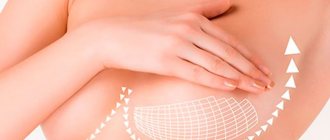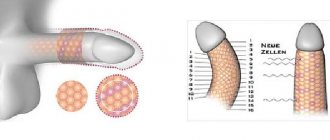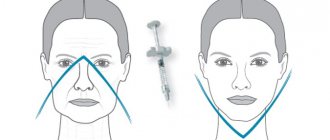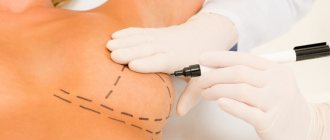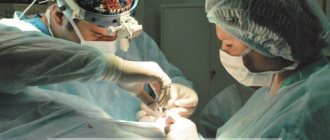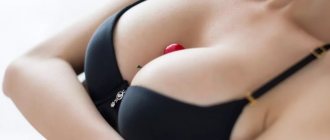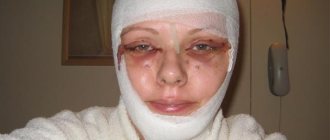At the end of the century before last, a figure correction technique was discovered; it used a regular syringe and the subcutaneous fat of the patient himself. But to achieve maximum effect in this procedure, doctors spent a whole century. Nowadays, lipofilling is an absolutely painless and very well-known procedure that does not require special preparation. For those who decide to do such manipulations, there is absolutely no need to waste time on complex tests or undergo a full and lengthy examination in clinics. Usually the entire procedure takes up to an hour.
Lipofilling can and should also be combined with other operations. This method is an independent and quite effective method of plastic correction of the aesthetic level, and in addition, it is also an integral part of a holistic approach. Therefore, before going to a plastic surgeon, you should definitely take a good look at yourself in the mirror to make sure how you can more effectively use excess fat tissue.
What is good about lipofilling?
Firstly, lipofilling is not an operation.
Secondly, for facial contouring you need to take very little fat. Material for lipofilling is taken from the abdomen or other places. After this, the fat is specially processed and purified. Fat is introduced in small columns. The surgeon carefully, so as not to cause mechanical damage, takes fat cells with a one and a half millimeter cannula and distributes them into the tissue, creating a kind of lattice from the injected particles, like a honeycomb with honey. This is a very delicate, filigree work. The result is a "layer cake" and certain areas of the fabric are lifted. A bandage is applied to the sites where fat is collected and introduced.
Thirdly, lipofilling is performed on an outpatient basis, that is, there is no need to go to the clinic. It is better to spend five to seven days after lipofilling in solitude. On the second or third day, tissue swelling occurs at the sites of fat injection, from small to medium, which then completely disappears. During the first two to three weeks, you should not sunbathe, visit the sauna, or take hot baths. Contraindication is diabetes.
Fourthly, allergic manifestations are excluded, since the transplantation of one’s own fat does not cause negative reactions in the body.
Fifthly, the effect after lipofilling is quite lasting: blood vessels will grow into the transplanted tissue after some time; they nourish fat cells, which ensure the preservation of volume and shape in the corrected areas.
The use of new technologies has made it possible to make the lipofilling procedure as safe as possible for the patient. The operation is low-traumatic, performed under local or general anesthesia, with a short recovery period. Your own adipose tissue takes root well and does not cause an allergic reaction. The length of stay in the clinic ranges from several hours to one day.
The full effect of lipofilling appears after some time - blood vessels grow into the transplanted adipose tissue, which provide nutrition to the fat cells, thereby preserving and maintaining the volume and shape of the postoperative areas.
This technique is characterized by basically the same contraindications as other surgical interventions. Our plastic surgeons will share with you all the features and nuances during your consultation.
Operation lipofilling
WHAT ARE ITS ADVANTAGES AND WHY IS IT SO POPULAR?
Operation “Lipofilling” aka “microfatgrafting”, aka “structural fatgrafting”, aka “fatgrafting” is a surgical operation. It involves transplanting fat tissue to restore volume in any part of the body in order to eliminate cosmetic defects or aesthetic deficiencies. Fat transfer has revolutionized plastic surgery. It is not for nothing that lipofilling is called “incisionless” rejuvenation surgery, as well as a method of volumetric rejuvenation. Currently, lipofilling is actively used by many surgeons and new areas of application appear every day. This method is well-deservedly popular, as it has many advantages with minimal side effects. Judge for yourself:
- The patient’s own fat tissue is used for transplantation, and therefore there will never be allergic reactions or rejection;
- lipofilling when transplanting large volumes (enlargement of the mammary glands, buttocks, legs) is accompanied by “liposculpture”, since when a large amount of adipose tissue is taken, new, more graceful body contours are formed. As sculptors, we sharpen the figure, removing all that is unnecessary and adding what is missing, based on the wishes of the patients. And any woman always has places that, in her opinion, need to be reduced;
- lipofilling can be used to increase the volume of any part of the body, while a beautiful contour that is natural in appearance and consistency is formed;
- unlike artificial implants, which have standard sizes and shapes, using adipose tissue you can simulate any shape and size necessary to increase a particular area;
- the transplanted fat always remains at the injection site and never migrates;
- lipofilling can be done in isolation or combined with any other surgical interventions: blepharoplasty, facelift, mastopexy, etc. In some cases this is necessary. Lipofilling, when combined with techniques, allows the results of other surgical operations, such as facelift, to last longer. The modern concept of rejuvenation is that it is necessary not only to tighten and remove, but to replenish lost volumes as much as possible. We share the opinion of many authoritative surgeons and researchers that with age, facial tissues stretch and fall not only under the influence of gravity, but also due to the loss (atrophy) of volumes characteristic of youth (eyes look sunken, with dark circles around, cheekbones flatten, “ cheeks sag, wrinkles become deep, etc.). A full face with soft, smooth contours looks young;
- The transplanted fat contains a large number of stem cells, which helps to improve the quality of the skin: increased turgor, the appearance of a “velvety” effect, a reduction in inflammatory elements and narrowing of pores. The skin at the site of lipofilling looks smooth, silky, and its color improves. When transplanted, adipose tissue acquires the properties of the tissue into which it was introduced (for example, opinions are expressed about the transformation of adipose tissue into muscle). Thus, the lipofilling operation not only rejuvenates, but also beautifies. Thanks to the regenerative effect of stem cells, the survival rate of fat is more than 80%, and the results last for a long time;
- after the operation there are practically no traces left from small incisions, and after some time it is very difficult to detect them even with careful examination;
- recovery time after lipofilling is much shorter, and there are fewer restrictions in the postoperative period than after other surgical interventions;
- The transplanted fat, after complete engraftment, remains for the rest of your life. If you doubt the need for lipofilling, then you can try to have contour plastic surgery done with absorbable fillers from a cosmetologist and if you like the result, it can be made permanent with the help of lipofilling;
- lipofilling can be performed on both men and women at any age.
WHAT ARE THE INDICATIONS AND CONTRAINDICATIONS FOR PERFORMING LIPOFULLING OPERATION?
An indication for lipofilling is any replenishment of volumes lost with age or initially insufficient. Fat transfer is an extremely effective and powerful technique for restoring and enhancing facial and body contours. The scope of this operation is limitless.
- Using lipofilling, you can model the cheekbones, cheeks, temples, periorbital area, chin, lips, and facial contours. Fill deep wrinkles of the face and neck (frontal, nasolacrimal and nasolabial furrows, wrinkles around the corners of the mouth), etc.
- Rejuvenate the back of the hands (arms);
- Correct the shape and increase the size of the mammary glands;
- Correct the shape and enlarge the buttocks;
- Correct the shape of the legs (correct some types of deformities, increase volume in case of muscle wasting);
- Eliminate defects after operations: in particular, after unsuccessful liposuction (pits, recesses, unevenness);
- Carry out correction, restoration of the shape and volume of the mammary gland after its partial or complete removal;
- Correct congenital, post-traumatic and postoperative soft tissue defects;
- Correct retracted scars;
- Correct the shape and volume of intimate areas (for example, increasing the volume of the labia majora), etc.
Contraindications are generally common to all surgical interventions, but there are a small number of specific restrictions:
- for facial lipofilling surgery - it is advisable to carry it out after complete resorption of the fillers;
- for lipofilling of the mammary glands - breast cancer or a genetic predisposition to them;
- severe fibrocystic mastopathy of the mammary gland with large cysts (more than 1-1.5 cm);
- for lipofilling of the legs - severe varicose veins of the lower extremities and lymphostasis.
UNDER WHAT ANESTHESIA IS LIPOFILLING OPERATION PERFORMED?
The type of anesthesia depends on the volume of fat tissue harvesting and transplantation. Lipofilling of small areas (cheekbones, lips, cheeks) can be performed under local anesthesia. Lipofilling of the entire face and hands is best performed under intravenous anesthesia. In our clinic we perform lipofilling of the mammary glands, buttocks, legs (liposculpture) under combined anesthesia (for example, inhalation anesthesia + intravenous anesthesia, epidural anesthesia + intravenous anesthesia, etc.) - this provides a sufficient depth of pain relief, good muscle relaxation and reduces the quantity and toxicity of drugs administered for anesthesia are easier to tolerate by patients.
HOW LONG DOES LIPO FILLING OPERATION TAKE?
The duration of the operation depends on the volume of fat harvesting and transplantation. From 40 minutes – several small areas to 4-6 hours for lipofilling of the buttocks.
DOES THE DONOR AREA, THAT IS THE PLACE WHERE THE FAT IS TAKEN FROM, MATTER FOR THE LONG-TERM PREDICTION OF LIPO FILLING OPERATION?
To some extent, yes, it does. The transplanted fat is believed to subsequently behave in the same way as the fat in the area of the body from which it was removed. Conventionally, adipose tissue can be divided into 2 types.
- “Fast turnover” cells that readily absorb triglycerides but also more quickly release fat as readily available energy. That is, fat in these areas quickly “melts” when losing weight. Fat transplanted from these areas behaves in a similar way at lipofilling sites.
- Other fat cells (type 2) act as fat depots. We call the places where such fat is deposited “fat traps.” These cells quickly metabolize triglycerides in the blood after eating. They then turn them into fat, and only in case of complete starvation do they convert this fat into energy. Therefore, fat cells from the fat depot area will remain in the lipofilling areas longer, even if you lose weight.
Fast-turnover fat cells will “disappear” quickly as you lose weight. For example, it is believed that when fat is transplanted into the face, the behavior of the cells is determined by the donor area, that is, the place from where they were taken. But it is hardly possible to say with confidence that the same effect will be observed when fat is transplanted in large volumes, for example, with lipofilling of the buttocks, legs or mammary glands. And to collect large volumes of adipose tissue, it is usually necessary to use all available donor areas, no matter what type of fat cell metabolism we are dealing with.
WHAT IS THE TECHNIQUE FOR LIPOPILLING OPERATION?
For the best engraftment of the injected fat, it is necessary to carefully follow the sampling and injection technique, have the necessary instruments, and also require great patience, pedantry and precise attention to detail on the part of the surgeon. The technique of lipofilling surgery is very specific, and careful handling of fat during the procedure is the key to its better engraftment after transplantation. In our clinic we perform lipofilling using the modified S. Coleman technique. After a detailed joint discussion with the patient of the surgical plan, photographs must be taken from the required angles of the areas of lipofilling and adipose tissue sampling “before” and “after” marking. After which the surgeon begins the operation. For clarity, we decided to demonstrate the main stages of the lipofilling operation in photographs:
1. A small skin incision is made in the area where the adipose tissue is to be harvested.
Fig.1
2. The stage of tissue infiltration with saline solution, which contains adrenaline, which causes vasospasm and thereby helps reduce bleeding. In cases where the operation is performed under local anesthesia, an anesthetic (novocaine, lidocaine, etc.) is also added to the infiltrated solution (Fig. 1).
Rice. 2
3. Fat is collected for facial lipofilling using special cannulas with many small holes (cannulas No. 1 and No. 2 in Fig. 2). Due to the presence of many holes, the negative pressure is significantly reduced compared to a cannula of the same diameter, but with one or 2-3 holes. And, as is known, the collection of adipose tissue should be carried out under low negative pressure, due to which it is possible to preserve more viable fat cells.
A small amount of fat (for example, during facial lipofilling) is removed with 10.0 ml or 20.0 ml syringes with a stopper, thanks to which it is possible to constantly maintain negative pressure (Fig. 3).
Rice. 3
4. In cases of liposculpture, when it is necessary to gain a significant amount of fat (for example, for lipofilling of the mammary glands, legs, buttocks, etc.), the procedure is carried out with various types of cannulas with a large diameter (cannulas No. 3 - No. 8 in Fig. 2). In this case, the fat is collected into a special container using a device (vacuum aspirator) under controlled low pressure (Fig. 4).
Rice. 4
5. The diameter of the cannula holes for fat collection must correspond to the diameter of the hole on the cannula for fat injection (Fig. 5).
Rice. 5
1 – cannula for sampling with a diameter of 2 mm; 1a – micro cannula for fat injection;
2 – cannula for sampling with a diameter of 3 mm; 2a – cannula for fat injection.
During the process of introducing adipose tissue, if the size of the holes does not match, either excessively high pressure can be created (if the insertion cannula is smaller), or vice versa - the fat will come out in too large portions (if the insertion cannula is excessively larger in diameter than the fat collection cannula). In particular, to collect medium-sized drops of fat during facial lipofilling, a fat cannula with a diameter of 3 mm is used (we call it “large grater” No. 2), to collect small drops of fat (lipofilling of the periorbital region, etc.) - a “small grater” 2 mm in diameter (No. 1 in Fig. 5). Accordingly, to introduce “small” fat, a micro cannula (No. 1a) should be used, the diameter of which is about 1 mm, and a medium cannula (No. 2a) should be used to introduce medium-sized fat droplets. Of course, these cannulas are blunt-ended (to ensure safety and prevent damage to blood vessels and nerves).
6. After completing the collection of the required amount of fat, an interrupted suture is applied to the incision with a thin thread (thinner than a hair). There are practically no traces left after such punctures.
7. In parallel with the collection of fat, the operating nurse processes it (washing, settling, removing excess fluid and blood elements). Adipose tissue contains delicate cells with a thin membrane, so it is necessary to handle the graft material as carefully as possible. There is no consensus on the need for centrifugation. Many surgeons centrifuge the fat - in our opinion, centrifugation can lead to the death of some fat cells, so we do not use this. Also, long-term contact of adipose tissue with air should not be allowed, so the nurse immediately draws the prepared fat into syringes and almost immediately it is injected into the donor sites (Fig. 6).
Rice. 6
8. Next, the recipient (receiving) zones are infiltrated with a special solution with adrenaline. This “flooding” of tissue contributes to safer and gentler passage of the cannula during lipofilling. Adrenaline plays a vasoconstrictor role and helps prevent hematomas.
9. The skin is punctured to insert the cannula in places that are least “noticeable” for the patient and “convenient” for the surgeon.
10. The entrance hole is slightly widened with the tip of the mosquito for easier passage of the cannula.
11. For facial lipofilling, the prepared fat is pumped through a special adapter into a lipografter - a “gun” (Fig. 7).
Rice. 7
12. The uniqueness of this instrument is that it allows you to inject a certain amount of adipose tissue absolutely accurately and in doses; there is no chance of “splashing out”, as they say, an excessive amount of fat (as happens when injected with a conventional syringe). With one press of the handle (“trigger”), approximately 0.2-0.3 ml of fat is injected (Fig. 8).
Rice. 8
13. Lipofilling of the mammary glands, legs and buttocks is performed with conventional 20.0 ml syringes (Fig. 9) using special cannulas No. 6 and No. 7 of suitable diameter (Fig. 10).
Rice. 9
14. The main principle of the stage of introducing adipose tissue into the recipient (receiving) zone is the uniformity of the fan-shaped cross “laying out of beads” of fat in several layers and only on the reverse (retrograde) movement of the cannula. The principle of multi-layer filling (you can call it “stuffing”, may the culinary experts forgive me) allows you to safely introduce a sufficiently large, one might say the maximum allowable, amount of fat for these zones. The injection area must have sufficient “space” and blood vessels for the graft to engraft, since space is left between these layers, it is easier for new blood vessels to grow in the transplanted fat, which is the key to its better engraftment. You always need to stop in time: the main thing (the chefs will remember me again...) is not to overdo it, not to “oversalt”. The more similar operations I perform, the more convinced I am that in some areas where potential irregularities will be especially noticeable (the face) it is always safer and more reliable to add than to introduce an excess amount in the heat of an irresistible desire (I mean the “excitement” of the surgeon) .
Rice. 10
WHAT ARE THE FEATURES OF THE EARLY POSTOPERATIVE PERIOD?
In the early postoperative period, swelling and minor bruising are noted in the areas of fat collection and injection. They usually go away within 7-10 days. Compactions and irregularities may be observed - which disappear after 2-3 weeks. The result of lipofilling can be finally assessed no earlier than after 2-3 months, and in cases of fat tissue transplantation in large volumes - after 4-6 months.
WHAT COMPLICATIONS ARE ENCOUNTERED WHEN CARRYING OUT LIPOFILLING OPERATION? HOW TO FIGHT THEM?
There are few of them and most often they occur when the technique of fat tissue transplantation is violated:
- fibrosis of the injected fat;
- formation of fatty cysts – so-called oleomas;
- uneven contours of the injected fat.
We schedule follow-up examinations for all our patients precisely in order to detect problems in time and take corrective measures. Fat is a very plastic material and if something goes wrong, in the early stages (up to 3 months) everything can be corrected with a simple massage, hardware lymphatic drainage procedures or the introduction of lipolytics.
IS THERE A DANGER OF MALIGNANT DETERMINATION OF FAT OR ONCOLOGICAL DISEASES AFTER LIPOPILLING OPERATION?
At present, there is no convincing evidence of the degeneration of adipose tissue into malignant tissue. And theoretical assumptions are very controversial.
WHAT AMOUNT OF FAT IS INTRODUCED ON AN AVERAGE IN ONE AREA?
It depends on the size of the zone. For example, on the face, I usually inject 9–12 ml into the cheekbones; on average, about 60 ml are needed for lipofilling of the entire face. From 240 to 340 ml can be injected into one mammary gland at a time, with good subsequent results, into the legs 140 - 180 ml, into the buttocks up to 1000 ml into each half.
IS THERE A DANGER OF DAMAGE TO BREAST TISSUE DURING LIPOPILLING OPERATION? IS IT POSSIBLE TO FEED AFTER THIS OPERATION?
No, It is Immpossible. The fact is that adipose tissue is injected very carefully around the gland: under and above it. The chest is practically not affected. Therefore, this cannot interfere with the feeding process in the future.
WHAT % OF FAT IS RECOVERED AFTER TRANSPLANT?
According to my observations, about 80% of the injected fat survives. Accordingly, about 15%-20% is absorbed in the first three months. Fat dissolves most actively in the first three weeks. After this period, it is much less and much slower. What remains after 3 months lasts for life. The percentage of engraftment of adipose tissue depends entirely on compliance with the rules for sampling and transplantation of adipose tissue, as well as on compliance with postoperative recommendations.
IS IT POSSIBLE TO PERFORM LIPOFULLING OPERATION WHEN THERE IS GEL IN THE TISSUE OR AFTER OTHER COSMETOLOGICAL PROCEDURES - SUCH AS THERMAGE, RF LIFTING, PALAMAR, PILLOT?
The lipofilling operation is performed only after the gel is completely absorbed in the tissues. Carrying out lipofilling after procedures such as Thermage, RF lifting, Palamar, DOT is possible. But it is necessary for patients to understand: all these procedures cause thickening not only of the skin, but also of the stromal component (connective tissue fibers) of the soft tissues of the face. In fibrotic-altered areas, the blood supply is worse, the tissues are more dense - this creates technical difficulties when carrying out the lipofilling procedure itself, and the survival rate of fat is worse than in unaltered tissues. However, the result will still be good.
According to our observation, the introduction of fat into scars “heals”: the tissues become less dense, acquire a healthier appearance and consistency. Currently, adipose tissue is used for the treatment of scarred vocal cords (voice restoration in aphonia), correction of Dupuytren's contracture, treatment of atrophic scars, during reconstructive operations and for long-term non-healing ulcers. We have experience in restoring the mammary glands (after sectoral resection and irradiation) almost to their original shape, consistency, size and healthy appearance of the skin. Patients are constantly seen by oncologists, who express surprise at the fact that even on ultrasound the tissues look uniform, structurally similar to the tissues of a healthy mammary gland.
DO YOU NEED TO WEAR COMPRESSION UNDERWEAR IN THE SITES OF FAT TISSUE TAKEN UP?
When performing small volumes of lipofilling - several areas on the face - wearing compression garments is not required. Thick nylon tights are sufficient. In the case of sampling and transplantation of a significant amount of adipose tissue, when we are talking about liposculpture, when performing lipofilling of the mammary glands, legs, and buttocks, wearing compression underwear is mandatory for 3 weeks.
WHAT ARE THE LIMITATIONS AFTER LIP OPERATION?
It is necessary to avoid heavy physical activity, heavy lifting, hot baths, steam baths, saunas, massage and pressure on the lipofied areas for three weeks. This is especially important when fat grafting of the buttocks (if fat was injected specifically into the lower part of the buttocks), then, of course, for two months it is not allowed to create compression in these places (it is allowed to sit only on special cushions and “country” chairs);
You should also not visit the solarium for 2 months - this can lead to pigmentation of postoperative scars.
IS RE-CORRECTION NEEDED AFTER LIPO FILLING OPERATION?
When performing facial lipofilling, as a rule, no corrections are required. Only after a few years, when the volume leaves other zones. As for other zones (breasts, legs, buttocks), it depends on the wishes of our patients: by how much or to what size they want to increase the volume of a particular zone. Very often, initially, patients plan several stages, but they are satisfied with the results of the primary operation and vice versa.
HOW LONG DO THE RESULTS LAST AFTER LIPO FILLING OPERATION?
You must understand that we are transplanting living fat cells, which are inherent in the metabolism of adipose tissue. These cells are cells that store fat. Therefore, after the fat has completely engrafted during transplantation (after 3 months), it will remain there for life. But if you lose weight, the volume in this area will go away as these cells will also shrink. However, the overall fat distribution pattern will not change.
HOW DO YOU EVALUATE THE PROSPECTS OF LIPOFILLING, THE FUTURE OF THIS METHOD?
Not long ago, at one of the international congresses, the famous master of plastic surgery, Dr. Thomas Biggs, chronologyed the most “fashionable” trends in plastic surgery in the world over the past 30 years:
- 80s - extended deep multi-hour facelifts and breast implantation;
- 90s – the era of endoscopic lifting;
- 2000 – Fat!!! (as it was written on his slide).
I believe fat grafting is an excellent procedure if it is performed in the appropriate area of the body, by an experienced doctor, and when the patient's expectations are realistic. This is an excellent alternative to a facelift for patients suffering from a flattening of the midface without significant age-related changes in the nasolabial folds or corners of the mouth. We perform lipofilling quite often in our practice and almost always include fat transfer as the final stage of facial rejuvenation. Lipofilling in the body area is not only an increase in volume, but also correction of shape, and in combination with liposuction it gives amazing results. It’s not for nothing that this type of procedure is called liposculpture. In the future, thanks to new developing technologies for isolating stem cells and using them as part of the transplanted fat, it will be possible to achieve unsurpassed results in facial and body rejuvenation. I sincerely believe that such a time will come very soon
Lipofilling of nasolabial folds
Nasolabial folds that are too pronounced or very deep bring a lot of disappointment to their owners, however, this is an area that lends itself well to correction using both cosmetic and surgical methods.
Often, when asking the question about the need to correct the nasolabial fold, the patient implies the need to smooth it out by filling it.
It is believed that when correcting this zone, it is necessary to level the level of the fold itself to the level of the adjacent tissues. But you need to understand that the nasolabial fold is not always formed as a result of tissue creases and has its own natural depression. Sometimes its origin, on the contrary, is associated with overhanging tissue as a result of drooping subcutaneous fat, resulting in the formation of a so-called roller located just above the nasolabial fold and aggravating its depth and size.
With the help of lipofilling, you can achieve two goals simultaneously: remove fat accumulations from problem areas of the body and fill the areas that need volume with the resulting fat tissue. You can increase the volume of your breasts by receiving a thin waist as a gift, give a rounded and seductive shape to your buttocks, and eliminate the problem of curvature of your legs.
Insufficient volumes and imperfect proportions of the buttocks cause a lot of grief to their owners and serve as an object for constant improvement. There are 4 types of buttock shapes: A-shaped, V-shaped, round and square. For each of them, you can identify areas that require correction: the so-called “ears”, “dimples”, sagging areas, asymmetry, “smoothness”. The fat grafting technique, as lipofilling of the buttocks is also called, allows you to safely enlarge this part of the body and give it an ideal shape by introducing your own fat into the tissue. After analyzing all the nuances of the shape, plastic surgeons determine the correct tactics for fat transplantation. The result of the work is beautiful, proportionally developed, elastic and toned buttocks.
The volume and shape of the legs are determined by the thickness of the bones, muscle development, and the amount of fatty tissue. When determining the parameters of ideal legs, the “three windows” principle is used, when legs placed together should form 3 spindle-shaped defects: between the ankles and calves, between the calves and knees, between the knee joints and the upper third of the thigh. The shape of the legs is corrected through fat tissue transplantation - the introduction of prepared fat material into certain areas effectively eliminates the problem of curvature: deficiency of muscle and fat tissue in the perineal area; excessively thin, closed knee joints; obvious insufficiency of the soft tissue mass in the upper third of the leg and ankles.
Lipofilling can solve many problems with restoring the shape and volume of the breast. The procedure improves the appearance of breasts with noticeable asymmetry. To correct the shape of the mammary glands lost after pregnancy and lactation, fat injections are injected into the subcutaneous or intermuscular space without affecting the gland itself. By injecting adipose tissue, you can achieve breast enlargement by 0.5-1 size. For greater mammary gland enlargement, lipofilling is not only not recommended, but also dangerous, since after a certain period of time the transplanted fat cells can be distributed unevenly and even turn into unsightly scar tissue. To increase breast volume, a large amount of fat is required, which gradually takes root. The growth of blood vessels and capillaries into it requires a certain time, and its own tissue cannot function for a long time without appropriate nutrition. When enlarging the mammary glands with implants, the lipofilling technique is used to hide the edges of the artificial material. Very often lipofilling is used in the case of reduction mammoplasty.
What affects cell survival
One of the problems that causes dissatisfaction among patients with the effect of lipofilling is the lack of volume in the corrected area. This happens because not all of the transplanted fat survives. Part of it (30 - 70%) is absorbed. The problem arises for several reasons:
- Not all cells are initially viable. And it is impossible to determine in advance which ones are more suitable for transplantation. Material taken from obese people is especially vulnerable. Their fat cells are weaker than those who are not overweight.
- Some of the transplanted material is damaged during the intervention itself. To carry it out, surgical instruments are used, which can easily injure the cell membrane. Processing fat in a centrifuge also plays a role.
Collection of the patient’s adipose tissue and injection into the correction area
- Sometimes the amount of transplanted tissue is too large, and part of it does not receive enough nutrients and oxygen. And they are needed for the formation of blood vessels in fat.
- The engraftment process is disrupted due to the fact that the patient does not comply with the rehabilitation conditions. This entails prolonged healing, which weakens the transplanted tissue and creates opportunities for its resorption.
- Smoking does not help maintain the viability of fat cells. And some patients do not want to give up their bad habit even during the rehabilitation period.
The preservation of the volume of transplanted tissue is also influenced by the method of fat extraction, the method of its purification, the specifics of administration and the area of correction. If unfavorable factors have led to the destruction of most of the transplanted cells, the procedure is performed again.
We recommend reading about how lipofilling of the buttocks is performed. You will learn about the advantages of the method, indications, contraindications for it, preparation and methods of lipofilling. Read more about chin liposuction here.
Facial lipofilling
Facial lipofilling is a technique that corrects cosmetic facial defects by injecting the patient’s own fat. Own fat is most often used on the face to perform contouring of the lips, cheeks, cheekbones and temples, upper and lower eyelids, lower jaw and chin, and smooth out nasolabial folds.
Areas where facial lipofilling is performed
As experts around the world recognize, facial lipofilling is practically the most optimal, and most importantly safe, way to correct age-related and congenital changes in the face associated with a decrease in volume in certain places. Using your own adipose tissue eliminates its rejection by the body and allergic reactions. Facial lipofilling is performed without leaving scars; As a result of lipofilling, a noticeable reduction in wrinkles occurs, the face acquires elasticity and volume in the right places. Since facial lipofilling requires little intervention and has virtually no contraindications, it is often performed simultaneously with other surgical operations.
As a rule, lipofilling on the face is performed with a slight overcorrection, since a small part of it is absorbed, and most of it remains for life. At our clinic, we have developed our own method for treating adipose tissue, which allows us to preserve the maximum number of fat cells in the desired area of the body and make the operation truly effective, and the result long-lasting. Aesthetic medicine has not previously attached importance to the correction of age-related changes in the temples, although the “sunken” temples that form with age are very noticeable. To get rid of sunken temples forever, there is a safe and modern method - facial lipofilling in the temple area. If you inject fat into the subcutaneous space of the temporal region, the face will become rounded again, the eyebrows will rise, and the skin in the corners of the eyes will smooth out.
Types of lipofilling
Facial lipofilling is done for completely different purposes. As a result of lipofilling, it becomes possible to smooth and emphasize the contour of the face (especially the cheeks), get rid of asymmetry, and eliminate voids under the eyes. Lipografting helps in eliminating aesthetic defects: drooping eyebrows, flabby contour of the lower jaw. You can also enlarge your lips, cheekbones, and chin. If it is necessary to do targeted plastic correction of a certain area of the face, the lipofilling method is the best.
Breast lipofilling is a method of correcting the configuration of the mammary gland using the patient’s personal fat. This is the most effective method of breast restoration after excision of cancerous growth, since it helps to avoid the introduction of artificial matter. This method also helps to restore the shape of the mammary gland with increased weight loss, correct the obvious deformation of the patient’s breasts and give it a wonderful shape.
Lipofilling of the buttocks is a method for those girls who dream of elastic, toned and voluminous buttocks. It allows you to eliminate all kinds of asymmetries and flaws in the buttocks, which will give them a more beautiful and feminine shape.
With this type of correction, purified fat cells are injected into small, pre-prepared incisions in the folds between and under the buttocks. Surgeons take these fatty deposits from the sides, abdomen, thighs or lower back and inject them in a specific dosage, which gives the buttocks the correct shape according to a predetermined pattern. Lipofilling of the buttocks takes no more than an hour.
Lipofilling of temples
Lipofilling of the temples can be performed both under local anesthesia and general anesthesia. Fat tissue for these injections is usually collected from the abdomen (through a puncture in the navel) or from the thighs. The resulting fat is centrifuged to separate it from the blood elements and the solution that is used for liposuction. After this, the fat is placed in syringes with a volume of 1 ml, and using special cannulas it is injected into the temple area.
On average, 5 to 15 ml of fat is required. The duration of the temple lipofilling procedure is usually no more than 30 minutes. Pain after surgery is minimal or absent. After facial lipofilling, swelling and bruising appear, which disappear within 1-2 weeks.
In the vast majority of cases, the result of facial lipofilling remains unchanged throughout life.
Features of buttock lipofilling
Lipofilling of the buttocks is a low-traumatic operation, however, after the procedure, hematomas, swelling or inflammatory reactions may appear. As a rule, these manifestations go away on their own in the first few days after surgery.
But sometimes lipofilling of the buttocks can lead to complications that are difficult to eliminate, such as asymmetry, tissue atrophy, and the formation of lumps under the skin. Such complications are always a consequence of the surgeon’s lack of experience and non-compliance with recommendations during the patient’s recovery period. Therefore, correction of the gluteal region using your own fat should be done in trustworthy clinics, choosing an experienced surgeon.
Lipofilling eyelids
With age, there is a loss of tissue volume (fat) in the upper and lower eyelids. Sunken eyes form, deep folds of the upper eyelids and nasolacrimal grooves form, which gives the face a tired appearance. You can restore your former youth in the area of the upper and lower eyelids with the help of lipofilling. During this procedure, not only the volume of tissue is restored, but also wrinkles are smoothed, the quality of the skin improves, and rejuvenation occurs in this area.
Fat for lipofilling of the eyelids is removed using liposuction. Lipofilling of the eyelids requires a small amount of fat (6-10 ml), so this procedure can be performed even in people with low body weight. Fat is collected from the abdomen, thighs, and inner knees.
After liposuction, the fat is centrifuged to isolate viable cells. After this, the fat is injected into the upper and lower eyelids using special microcannulas.
The eyelid lipofilling procedure usually lasts no more than 1 hour. Pain after surgery is minimal or absent. After facial lipofilling, swelling and bruising appear, which disappear within 1-2 weeks.
In the vast majority of cases, the result remains unchanged throughout life.
Preparation and planning of the volume of lipofilling
Lipofilling is classified as a minimally invasive procedure. It does not require general anesthesia, so preparation for it is extremely simple and includes a standard list of examinations:
- Blood and urine tests;
- Tests for HIV, syphilis, hepatitis;
- Determination of blood group and Rh status;
- Fluorography.
If there are congenital defects of the bony base of the facial skull, the doctor may refer you for an X-ray or MRI in order to have a clearer idea of the nature of the pathology and the upcoming extent of the operation. In all patients, the nature of the concomitant pathology and allergic history is clarified, especially if there has been experience with the use of anesthetics in the past.
Before lipofilling, the patient must talk with the surgeon, who must clearly and in as much detail explain the essence of the procedure, the expected result and possible complications, after which the patient signs consent to carry out the manipulation. Anticoagulants and antiplatelet agents are canceled, it is better to eliminate alcohol and smoking in advance.
It is also important to describe in detail what effect can be achieved during lipofilling of certain areas of the face, since many clients of cosmetic clinics have a very vague idea about this. For example, fat transplantation into the eyelids allows you to smooth out wrinkles, “straighten” the nasolacrimal groove, and eliminate blue discoloration. To do this, just a few milliliters of tissue is enough, which is distributed using a fan technique around the eyelids.
The introduction of fat mass into the area of the cheekbones and cheeks smoothes out nasolabial folds, giving the face roundness, expressiveness and freshness characteristic of youth. Whiskey is another problem area that clearly shows age, starting to sink and flatten. The introduction of fat here gives roundness, lifts the eyelids and eyebrows, leveling out age-related changes.
Pinpoint fat tissue transplantation allows you to eliminate almost any wrinkles on the face, increase the volume of the lips, change the shape of the chin and refine the contours of the jaw, remove focal cosmetic defects and asymmetry. In combination with neck lipofilling, correction of facial fat tissue can give an impressive effect with the high skill of the surgeon and the correctly selected technique and amount of graft.
Facial lipofilling: cheekbones and cheeks
Lipofilling of the zygomatic region and cheeks can be performed both under local anesthesia and general anesthesia. For facial lipofilling in this area, injections of fat taken from the abdomen (through a puncture in the navel) or on the thighs (through a puncture in the gluteal fold) are used.
The collected fat tissues undergo special processing, the purpose of which is to separate the fat cells from the blood and liposuction solution.
The duration of the lipofilling procedure for the zygomatic region and cheeks is usually no more than 1 hour. Pain after surgery is minimal or absent. After facial lipofilling, swelling and bruising appear, which disappear within 1-2 weeks.
In the vast majority of cases, the result remains unchanged throughout life.
Advantages and disadvantages of lipofilling
In terms of effectiveness, lipofilling is often compared with classic plastic surgery and the use of fillers, since all these techniques pursue similar goals. The advantages of fat transplantation compared to other techniques are:
patient: before/after the procedure
High degree of safety - your own adipose tissue will not cause allergies and will not be rejected, as happens with synthetic materials and implants;- The result looks physiological - the face becomes fresh and naturally rounded, while the introduction of hyaluronic acid provokes swelling, a feeling of heaviness, uneven filling of wrinkles and other unpleasant effects;
- The effect lasts for life, since cells that have taken root in the soft tissues of the face remain there forever;
- The possibility of combining lipofilling with the introduction of stem cells and autologous plasma components, which improves the result of the procedure;
- Uniform distribution of the graft, no risk of contouring, as in the case of silicone prostheses;
- The operation was well tolerated and there were no age restrictions.
about the disadvantages of lipofilling, and it is better to do this even before setting the date for the operation, and, preferably, from the surgeon himself, and not from friends, neighbors or “colleagues” at a beauty salon. The disadvantages of lipofilling are:
- The labor intensity and technical complexity of the manipulation, which require the highest skill, talent and accuracy of the surgeon;
- Possibility of carrying out exclusively in the operating room with the use of appropriate equipment, primarily due to the need for graft collection;
- Long recovery period - up to 2 weeks, during which the patient will have to live with swelling and traces of injections;
- The need to have at least minimal fat “reserves” from which it is possible to extract fat without risk to health and aesthetics;
- The high cost of the procedure makes it inaccessible to some of those interested.
Lipofilling of nasolabial folds
With age, the nasolabial folds on the face increase; You can stop this process with facial lipofilling surgery. Of course, you can come to terms with the presence of signs of age on your face and not take any steps to correct the situation; There is an opinion that every age has its own charm.
But often even young patients with congenital deep nasolabial folds believe that this feature visually adds several years to their appearance.
Before undergoing facial fat grafting, a consultation is required during which the patient is told what results to expect. Unfortunately, it is impossible to completely eliminate nasolabial folds. Facial lipofilling can only make them less deep and less noticeable.
Before the lipofilling operation of the nasolabial folds, markings and photographs are taken. The operation of lipofilling of the nasolabial folds can be performed both under local anesthesia and under general anesthesia. For facial lipofilling in this area, injections of fat taken from the abdomen (through a puncture in the navel) or on the thighs (through a puncture in the gluteal fold) are used.
The collected fat tissues undergo special processing, the purpose of which is to separate the fat cells from the blood and liposuction solution. The resulting fat is injected with special cannulas, as a rule, from three points into the area of the nasolabial folds. The amount of injected fat depends on the severity of the nasolabial folds and can range from 2 ml to 10 ml.
Pain after surgery is usually not expressed. After facial lipofilling, swelling and bruising appear, which disappear within 1-2 weeks.
The duration of the lipofilling procedure is usually no more than 1 hour.
In the vast majority of cases, the result remains unchanged throughout life.
Contraindications to lipofilling of the buttocks
Correction of the gluteal region using the patient’s own biomaterial is not prescribed to persons under 25 years of age. This is due to the fact that until this age the figure continues to form, so the result of lipofilling may be disappointing in the future.
Buttock augmentation using fat cells is not performed if the patient has:
- Severe pathologies of the heart and blood vessels;
- Malignant diseases;
- Diabetes;
- Mental disorders;
- Bleeding disorders;
- Acute infectious diseases.
Temporary contraindications include pregnancy and lactation, treatment with vasodilators, periods of high fever and exacerbation of chronic diseases.

